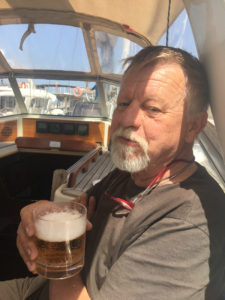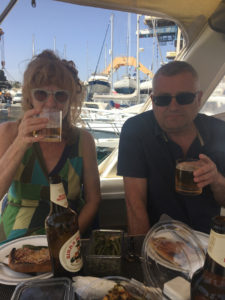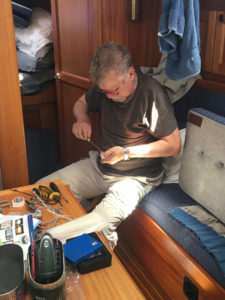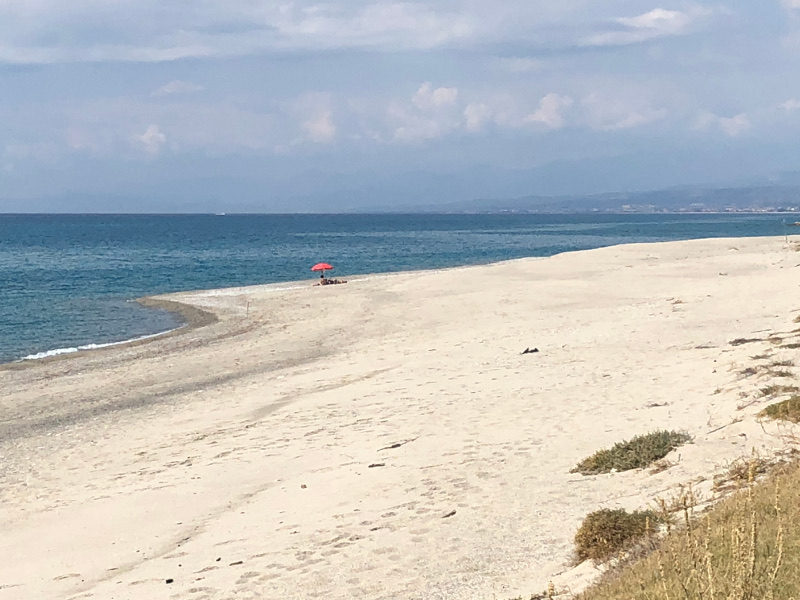
Underneath the Italian boot: Rocella Ionica
38° 19′ 40.512” N 16° 25′ 59.6676” E
May 9, 2018
Fast lizards run around our feet, as we walk the three kilometers from Porto delle Grazie to the town Rocella Ionica, and again we feel that our destinations are often more of a mood than a particular geographic location.
Freshly clean sea air mixed with the fragrance of spring flowers, freshly cut grass and small pine plantations. Kilometer-long beaches with – at this time of year – only one single red parasol that beautifully matches the turquoise-blue Ionic ocean. Old men are sitting in the shade on their plastic chairs and watch the world pass by.
After 12 hours of sailing – three hours for sail and nine hours for motor – we have crossed the Messina Strait and laid the majestic profile of Sicily and Etna behind us. We have sailed up under the Italian boot, where the mainland of Italy will become the framework for our next experiences, and we have seen – from the sea – how the landscape has changed from Sicily’s lush green east coast to Calabria’s dry and rough mountain slopes. From dense residences to scattered residences. We have to go far up the mainland coast, before we find a real port.
The port of Rocella Ionica is called Porto delle Grazie, and it is large, well-protected and well-functioning. We are approaching Greece, which causes harbor prices to fall. “We have to be competitive, otherwise our customers will sail directly to Greece,” says Francesco, who in white shirt and jacket controls the guest harbor, while calling you for captain in every other sentence.
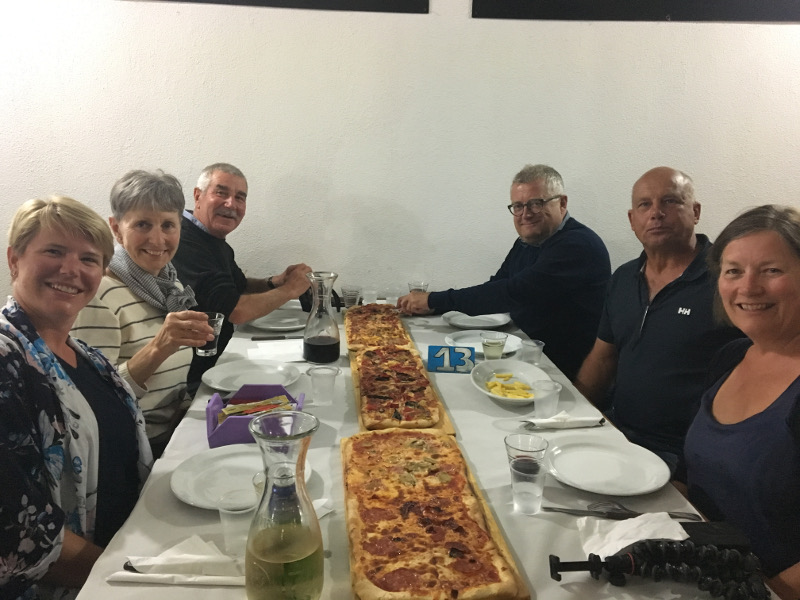
Ready for 1,5 meter of italian pizza and a british-danish sailor-reunion
We dine in the harbor’s excellent pizzaria together with two British crews, Claire and Derek from the boat “Red Rooster” that we have previously been with in San Remo, Genoa and Riposto, as well as Elisabeth and Ken from the boat “Pala”, whom we learned to know in Riposto. The specialty of the place is pizza by the meters. We order one and a half meters and have a really pleasant evening.
Bonus info: If you are good at hackling the prices, then you should definitely use this skill in southern Italy, where we often experience that the list price for a berth for your boat can be negotiated significantly, especially if you can suggest, that you might stay in the port for several days if the price is good. Of course, it also helps us to sail outside the high season, but we have experienced the price in for one night in Riposto started at 55 Euros and ended in 42 Euros per night. And in Lipari the opening price of 40 Euros, was changed into 30 Euros.
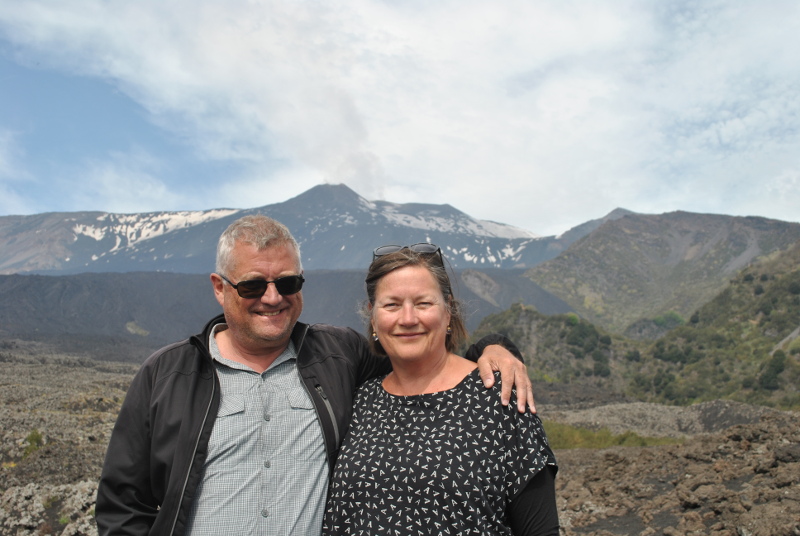
Quiet days in Riposto
37° 43′ 50.1528” N 15° 12′ 31.9068”
May 7, 2018
“Etna releases gas today. That’s a good sign”, says my taxi driver, Emanuele, as he drives me to Catania Airport. When Etna releases gas, it’s a sign of peace and no danger, when on the contrary she pauses for many days, it may be because she is building up to a major eruption, he explains.
Emanuele lives himself at the foot of Etna, in the town of Giarre, and it is part of his daily routine, that he starts the day watching the volcano to assess what mood she is in today. Etna’s mood is part of the reality of life when living at the foot of the volcano, and Emanuele makes few concerns, because the recent eruptions have stopped just before the lava wiped out the first village on its way. So, no worry.
I ask him if it’s cheap to buy land and property, when living on the edge of a volcano. No, he answers. It is expensive to live in the metropolitan areas of Sicily and cheap to live in the country. But it is not cheaper to live on the edge of Etna than elsewhere in the country. And the earth is amazing. It is lush. Wine, flowers, grass and trees bubble of vitality.

VIP-reception in Catania Airport – Emanuele my taxidriver from the hillside of Etna.
Ronja is moored in “Porto dell ‘Etna” just below the volcano, in the town of Riposto, and it is a perfect starting point for trekking on Etna, visiting the tourist resort of Taormina, swimming in the Mediterranean in late April or exploring the city centers in Catania and Syracuse.
Riposto is not much to write about in itself, except that it is a city, that is completely unaffected by tourism. The city lives its very own life. The inhabitants fish, grow tomatoes, oranges, wine or they drive to work in Catania or Taormina and the city do not need to please the tourists. Everything – shops, cafes and traffic – is aimed at the city’s own inhabitants. Only the marina adds a modest touch of tourism.
Riposto, along with the neighboring town of Giarre, has a common train station, which brings you to Catania or Taormina for typically three euros and to Syracuse for eight euros. And if there is anything, Italians are good at, it is running trains precise on time. They export all of their technological train-wonders to Denmark, sticking themselves to their old trains. Out of our eight train-trips only one was delayed and only by five minutes.
Taormina is a hit. We are sometimes a bit annoyed by over-touristed Italian cities, and Taormina is over-touristed, but it is so with a lot of good reasons. It’s an unlikely beautiful city, glued to a mountain side overlooking the sea, ancient as Metusalem, green and charming, and with a cable car down to the sea, where in particular Lido la Pigna is a balm for the soul with the sound of waves, lovely sand and lush swimming waters. The mood of holiday that is good to be a part of.
Syracuse we should have spent more time in. It is full of history and culture. A beautiful city, which we will revisit with Ronja one day instead of by train.
Catania is Sicily’s second largest city, youthful, dynamic with beautiful churches, theaters and art museums, while colossal elongated rock formations in the form of stiffened lava at the outskirts of the city bear witness to the days, when the city was washed in the sea by a violent eruption from Etna. It is only 300 years ago.
And then we’re back to Etna. Everything depends on the volcano. Does it release gas today? Or does it take a break and build up to something big? On the one hand scary but at a paradox also conforting and fascinating.
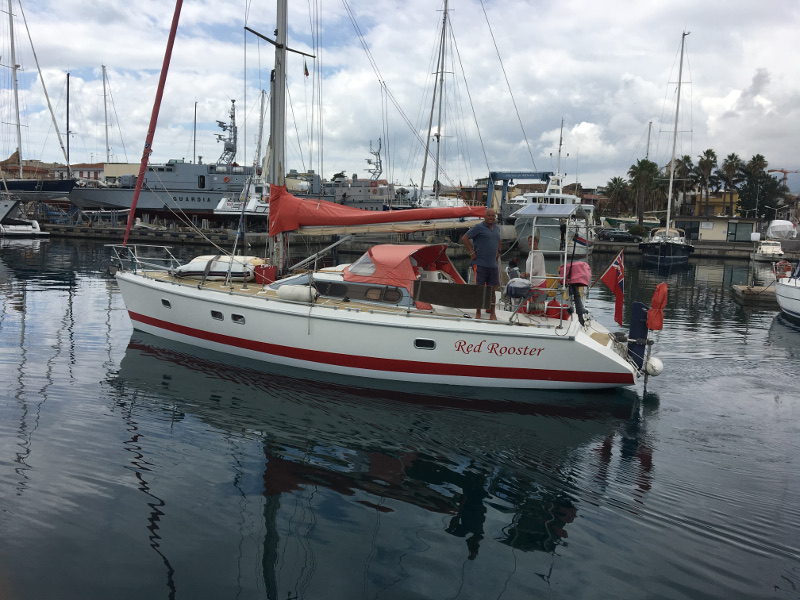
Reunion after two years – Claire and Derek, that we met in Northern Italy, suddenly turns up in Riposto. Nice surprise
Our stay in Riposto will be 14 days, partly because Per travels a few days to Denmark to work, but also because the harbor is calm and well functioning, and the city appears as a more unspoilt Italian province than many others we have visited.
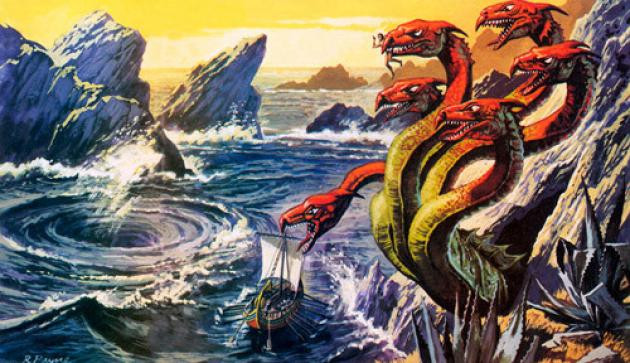
Choosing between Scylla and Charybdis
38° 11′ 56.8572” N 15° 33′ 31.5648” E
23rd April
It’s not without a tension, we sail Ronja right between Scylla and Charybdis – the two legendary sea monsters who have guarded the entrance to the Messina Strait for thousands of years and called horror among seafarers. In addition to the two mythological monsters we have heard, that the Messina Strait today is a mess of crossing ferries, and that we should study the local tidal tables, as the strength of the tide can be even very strong.
Scylla was, according to the myths, a mighty six-headed monster with sharp teeth and a long scaly tail. She kept herself alive eating the seamen, who passed her. Charybdis was another monster who lurked on the seabed under a big whirlpool into which sailors were sucked if they came too close. If you sought to avoid Scylla, you came invariably too close to Charybdis. According to Homer, Odysseus decided to sail close to Scylla in order to lose only a few seamen instead of getting near Charybdis at the risk of losing the ship as well as the entire crew. Throughout the 18th century, British navy vessels were systematically encouraged to show extra attention when entering the Messina Strait from the north because of ekstraordinarely violent whirls in the water.
The two names still appear as local names in our naval chart. Charybdis is close to the Sicilian coast, and Scylla is on the mainland coast, exactly where the Messina Strait is at its most narrow. Well, today we still have whirls to pass, where the two monsters are said to have ruled. But the power has obviously been tamed. One possible scientific explanation may be, that a fierce earthquake changed the seabed in 1783, thus removing the foundations of the worst of the frantic whirls, which for a great many years kept the myth of Scylla and Charybdis alive.
Nor does the ferry-traffic scare us, it corresponds very much to the crossing between Elsinore and Helsingborg between Denmark and Sweden. And the potentially strong current is no worse, than to sail through Svendborg Sund in Denmark.
More unpredictable, however, are the winds that are formed by the tall mountains on both sides of the strait. Monsters or not: Increased attention is a good thing, when you sail into the Messina Strait from the north.
After a long day’s trip from Lipari we choose to go to the quay in Messina town, which do not, however convince us of its charm. It is a big and relatively new city. Most of its ancient buildings were smashed by an earthquake in 1908, which killed 100,000 inhabitants, and in 1943 the city was again completely injured under an ally bombardment.
The harbor is not protected from waves from the intense ferry traffic, so we got to get on.
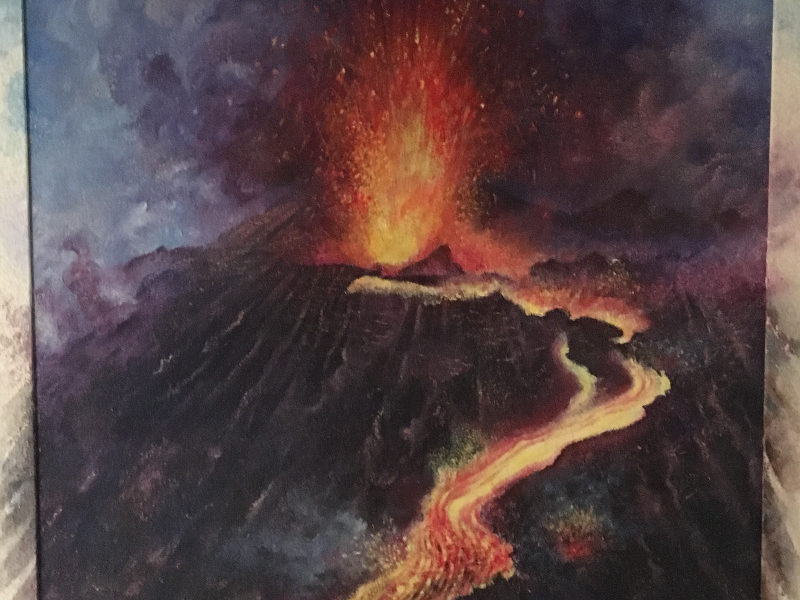
With Ronja on volcanoes
38° 28′ 40.2312” N 14° 57′ 49.9932” E
22th of April
“Lipari is a mood rather than a place,” skipper’s wife philosophes already after only one day on the island of Lipari, and after five full days on the liparic islands, she insists that we have encountered not one single bad thing on the islands. Nothing at all. The islands have it all.
Hiking routes, excursion boats, ancient monuments, volcanoes, spring flowers in all conceivable colors and intoxicating fragrances of jasmine, wild roses, thyme, rosemary and … petrol for scooters. Spring is in full and succulent bloom on Lipari and on the other six islands of the archipelago, which most call “the Aeolian islands”, but as we choose for some reason to call “the Liparic islands”, even as the name “the Aeolian islands” is historically much more interesting. This name comes from the Greek wind god Aeoulus, who – according to Homer – gave Odysseus all the opposing winds bound in a sack. His crew thought that the sack contained a treasure, opened it and thus founded the reputation of the area for having unpredictable winds.
After a full day of sailing from Cefalù in Sicily, where we encounter flocks of dolphins and a single sea turtle swimming in 1400 meters deep water and 50 kilometers to the nearest coast, Ronja is now lying in the moors of Pignataro, which is the only of the ports and the pontoones on the main island of Lipari, which are ready for the season already here in mid-April.
Alone this port, Pignataro, is balm for the soul. Here is beautiful, and here is peace. We hold our siesta on the back deck with a pillow below the neck, while we lavishly look at the lush hillsides around the harbor listening to the fishermen’s talk while fining yarn after morning fishing, only interrupted by some excited shouts, when the fishermen occasionally disagree.
Ripari is the largest of the islands in the archipelago. But we also visit the islands of Panarea and Stromboli, especially the latter makes a huge impression with its constantly sizzling volcano. Unlike many other volcanoes, which for a long time – ten years or a hundred years – build up to a huge explosion, Stromboli is in constant activity and every ten minutes – or something similar – it slips a cloud of gas accompanied by a thunder-like rumble. When the darkness falls on, we can see, that lava is spraying in the air and are afterwards rolling glowing down the mountain side.
The constant volcanic activity has given Stromboli reputation as the Mediterranean lighthouse, and even as the world’s oldest lighthouse, which, with its location, manages to lead sailors down to the Messina Strait.
And how strange it is to think, that Stromboli raises almost one kilometer up from the sea’s surface, but it also stretches another two kilometers deep into the sea. It’s a huge volcano. A conical rock, three kilometers high, standing on the bottom of the ocean, with just a third rising above the surface of the water, and even it draws its explosive power and its magma from even deeper into the earth, than the three kilometers! In my next life, I want to be a volcanologist!
A good advice: If you are heading down the Messina Strait either through Sardinia and Sicily or along the mainland of Italy, take a detour to the volcanic islands Vulcano and Stromboli, and put in if you like a stay at Lipari.
It’s a mood rather than a place 🙂
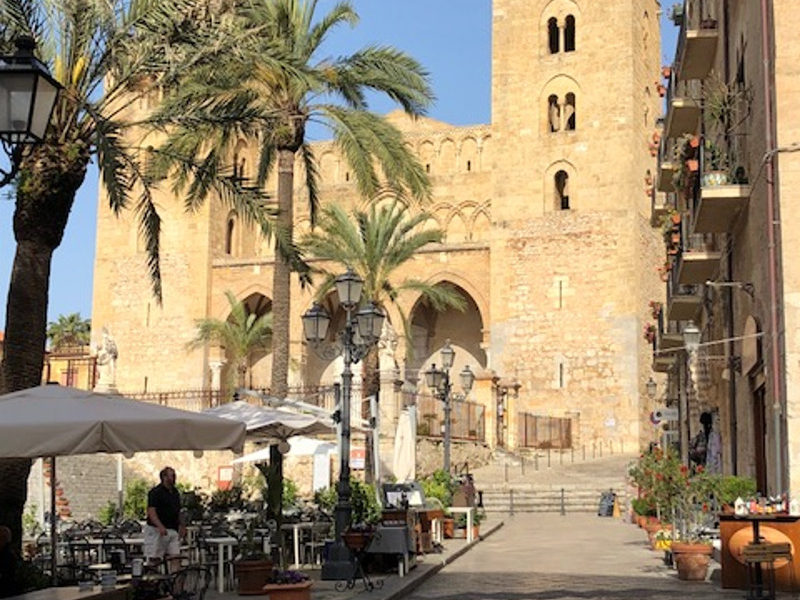
Cefalù has everything – yet we want to get on
38° 2′ 16.8216” N 14° 2′ 0.186” E
April 17th
The city of Cefalù has according to the guide books – even the occasionally critical lonely planet – everything: a magnificent beach, a truly wonderful historical center with a magnificent cathedral and beautiful medieval streets with shops and restaurants. My soul what do you want more?
We want to get on.
It’s all very beautiful. Narrow streets with laundry from house to house, aesthetic decay in beautiful colors, but more than every second shop sells souvenirs, and if you have experienced Palermo’s fantastic decorated churches, it’s frankly difficult to fall in love with Cefalù’s pride, the cathedral. The city is too cute, too artificial, too possessive towards tourists.
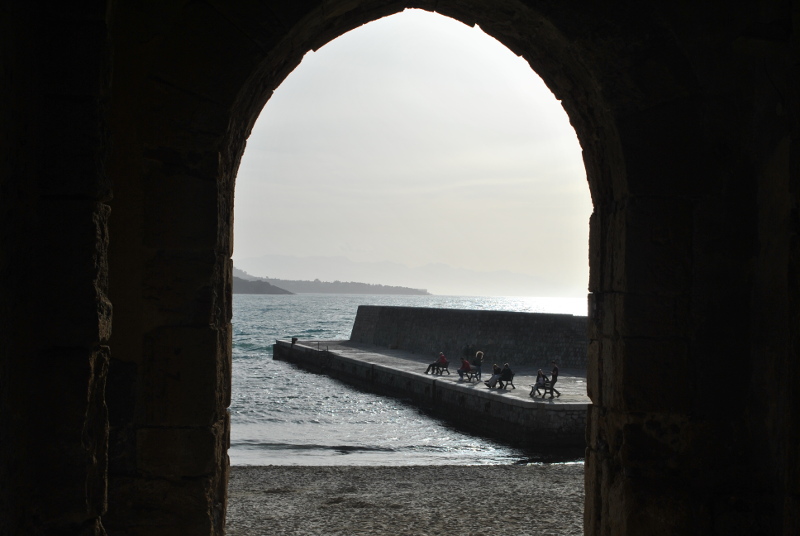
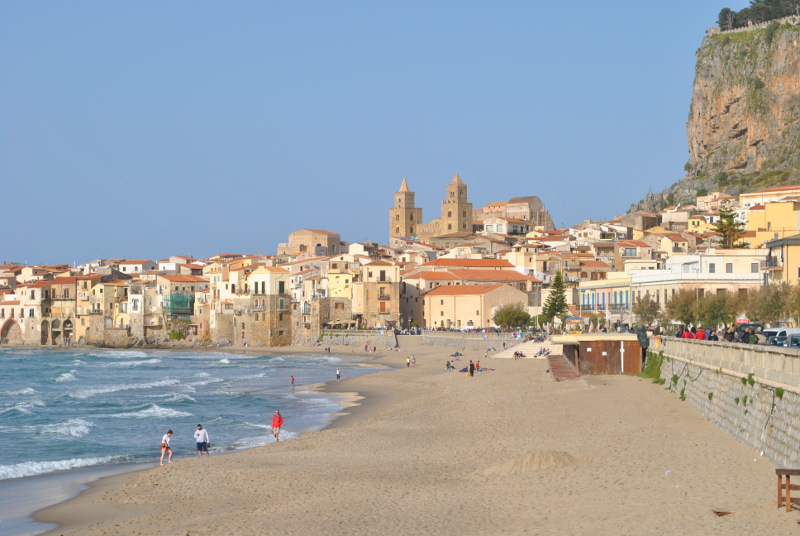
We spend the night a little outside the city, where we get the choice between a berth with electricity or one with water. Both? No, that is not possible. Toilets and baths are not available either. The bridge is controlled by the man who owns the gas station. He takes over price for diesel. Requires 30 euros for a berth in a port, which on a whole day was called by three sailboats. It is not demand that drives up the price.
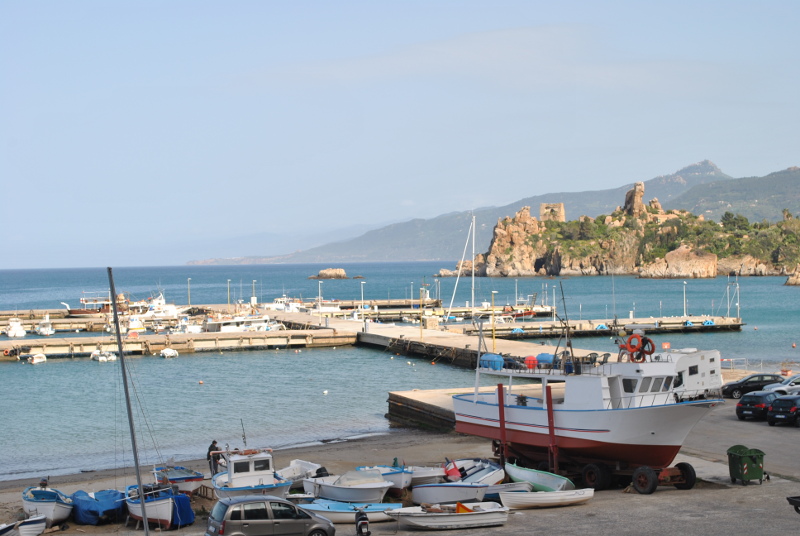
Bonus Info: Try the northern part of the harbor. It looked a bit better. Like many other Italian ports, the different bridges in Cefalù are commissioned to individuals, and there is a huge element of lottery in whether you get in the claws of the “right” people.
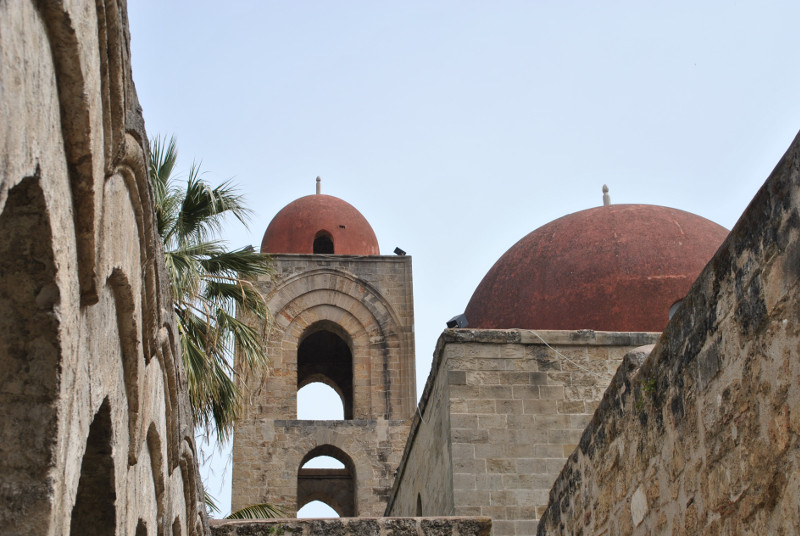
Pictures from Palermo
38° 7′ 19.992” N 13° 22′ 13.728” E
April 16th
Palermo is a diverse, worn out, lively and totally charming city. It is said about this city, that where Rome and Florence push their cultural treasures directly on to the minds of the tourists, Palermo is a city where the visitor himself has to discover and experience the city’s numerous cultural treasures.
Lavishly decorated churches, palaces, fountains, theaters and a nothing less than magnificent opera-house appear here and there in an otherwise rather worn cityscape. Especially for Palermo, the city has been occupied by Greeks, Romans, Arabs and Normans throughout its history, and these cultures have each had a few hundred years to put their mark on the city. The result is a very interesting architectural cocktail.
Commercial life ranges from fashionable shopping streets with the usual Gucci bags and Rolex watches to much more humble market streets, where the crisp scent of fish, freshly slaughtered sheep, spices and fruit blends with the sound of fiery scooters and street traders loudly shouting out the offer of the day. And at the same time Palermo still has streets, where crafts cling together side by side – the street of bicycle repair shops, the street of silversmiths etc.
The Mafia – Sicily’s Cosa Nostra – is not to be noticed anywhere. Maybe they are today dressed up in needle-stripped habits being contend to conduct activities in property management and build contracting?
For 16 days Ronja has been in Marina Galizzi. Skipper Per has been in Denmark to attend some board meetings and do some lectures on his recently published book on journalism in the future, and in the meantime Kirsten has “held court” aboard Ronja with alternating guests from Denmark – daughter Emilie and girlfriends Hanne and Anne.
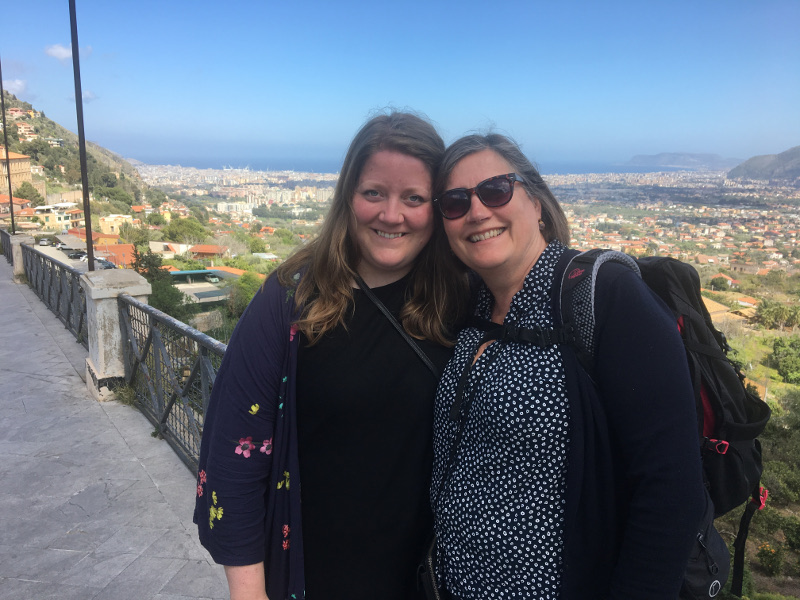
Mother and daughter. Emilie is in Palermo
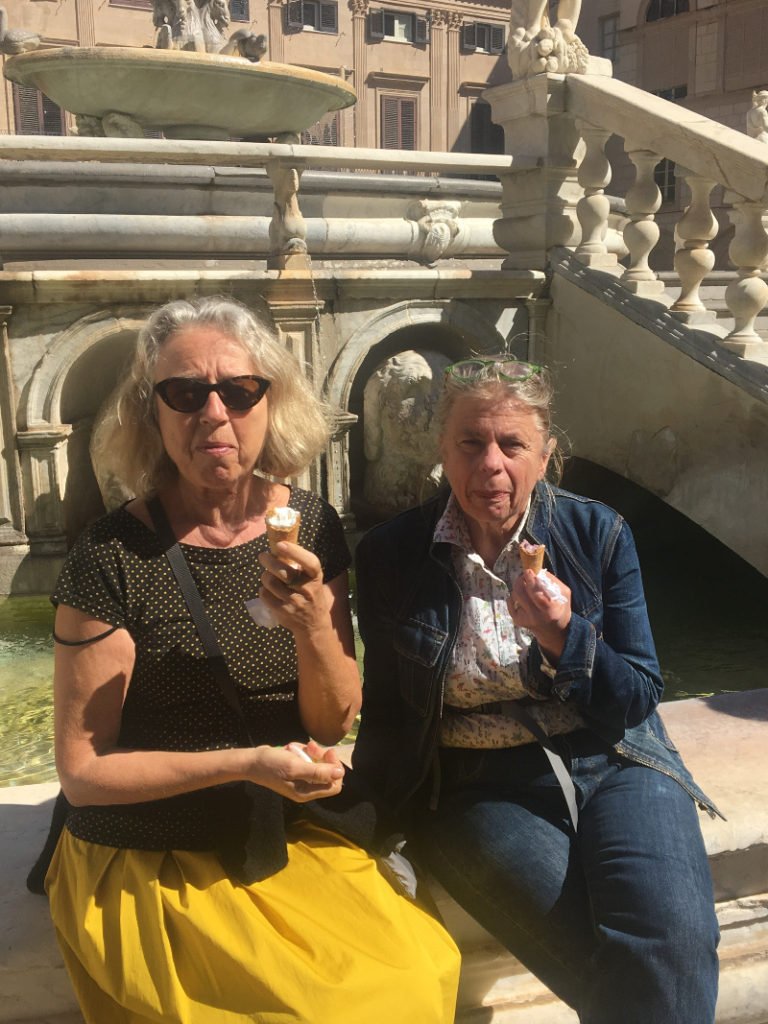
The italien ice creame is fantastic. Hanne and Anne in Palermo
At the same floating bridge in Marina Galizzi are two other Danes, Sten and Rosemarie, with their lovely sailboat, a Southerly 110, Troldand, www.troldand.dk. Sten and Rosemarie are Mediterranean veterans. They have had their boat on land in Palermo during the winter and have spent a total of two months in the city, so they generously pour out their knowledge of Palermo. They guide us, show us the most beautiful churches, the exciting hand shoemaker, the nicest restaurants and even take us to the opera to Bellinis “I Puritani”.
- Sten Engelstoft is a storyteller. Skipperstories from the great oceans.
- Rosemarie Boeck and Per having lunch aboard Ronja
- … Sten is not only a storyteller, he is also a great handyman
They are themselves on their way home to Denmark after eight years in the Mediterranean, while we at Ronja are still heading out in the world. We switch charts, guidebooks and listen greedily to their numerous sailing tips from Greece, Albania, Montenegro, Croatia, Spain and Marocco.
Bonus info: Palermo is worth considering as a winter port. Prices for storage are reasonable (we have the prices). You can come to and from the airport by bus for six euros in 45 minutes. However, the flight time is long and usually having several stops. The price for a berth in the water outside high season is officially 65 euros per night, but the price is – as always in Italy – up for negotiation. For a larger number of nights, we have heard of prices closer to one third of the 65 euros
EASTER IN PALERMO: Good Friday in Palermo is marked with several major marches that slowly move through the city under the weight of apparent very heavy relics of Christ and Virgin Mary, with historic dresses, incense and accompanied by sad music, as if it was a funeral procession for a Mafia boss in New Orleans.
PALERMOS MANY CHURCHES: They have churches everywhere in Palermo, and in the churches, we find the clear traces of the city’s changing powers. Roman, Arabic, Byzantine and Norman decor – sometimes even interfering with one another in one church. We think the most interesting churches are the cathedral in Monreale, the Palatine church in the royal palace and chiesa di Jesús right in the city center. But look for yourself at these pictures.
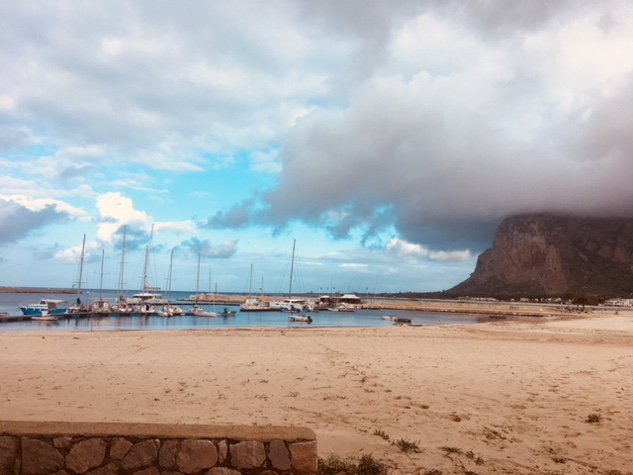
Sicily outside opening hours
38° 10′ 54.3252” N 12° 43′ 59.4336” E
March 28, 2018
After four hour of sailing from Trapani, we decide to seek port in San Vito Lo Capo on Sicily’s northwestern tip. It has been raining a little all morning, the wind is modest but the waves are pretty tall. We have all of the Mediterranean for ourselves. Italians do not do pleasure sailing at the end of March, so we meet no other sailors.
San Vito Lo Capo is set in a beautiful bay, that is known for its clear azure green water, one of the finest beaches of Sicily, and for good hiking and climbing opportunities in the mountains. A real holiday resort. And because of the season, the city is almost as desolate as the ocean. Shops are still closed for the winter, small hotels are getting ready for spring, and at the few open cafes local men are playing cards. During our hike through the city we meet in total six tourists.
Facts: Out of season we pay 20 Euro for a berth in the harbor.
New adventures with S/Y Ronja
38° 0′ 48.6108” N 12° 31′ 14.448” E
We are ready for new adventures. S/Y Ronja is ready, she got painted her bottom, and she has been lifted into the water in Trapani, Sicily. Next stop Palermo with an ambition to reach Greece within the next three months.
